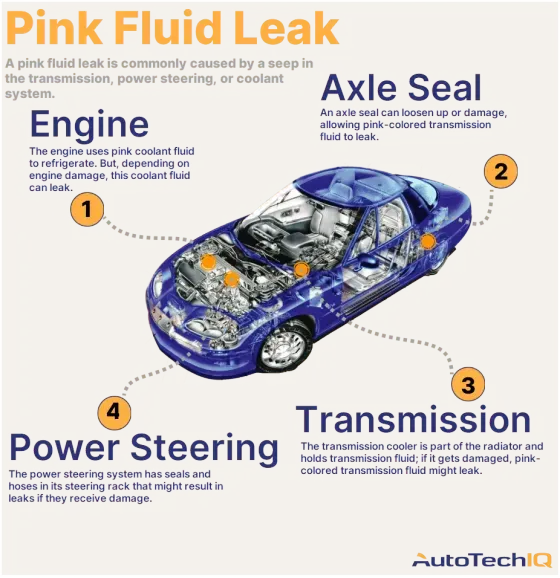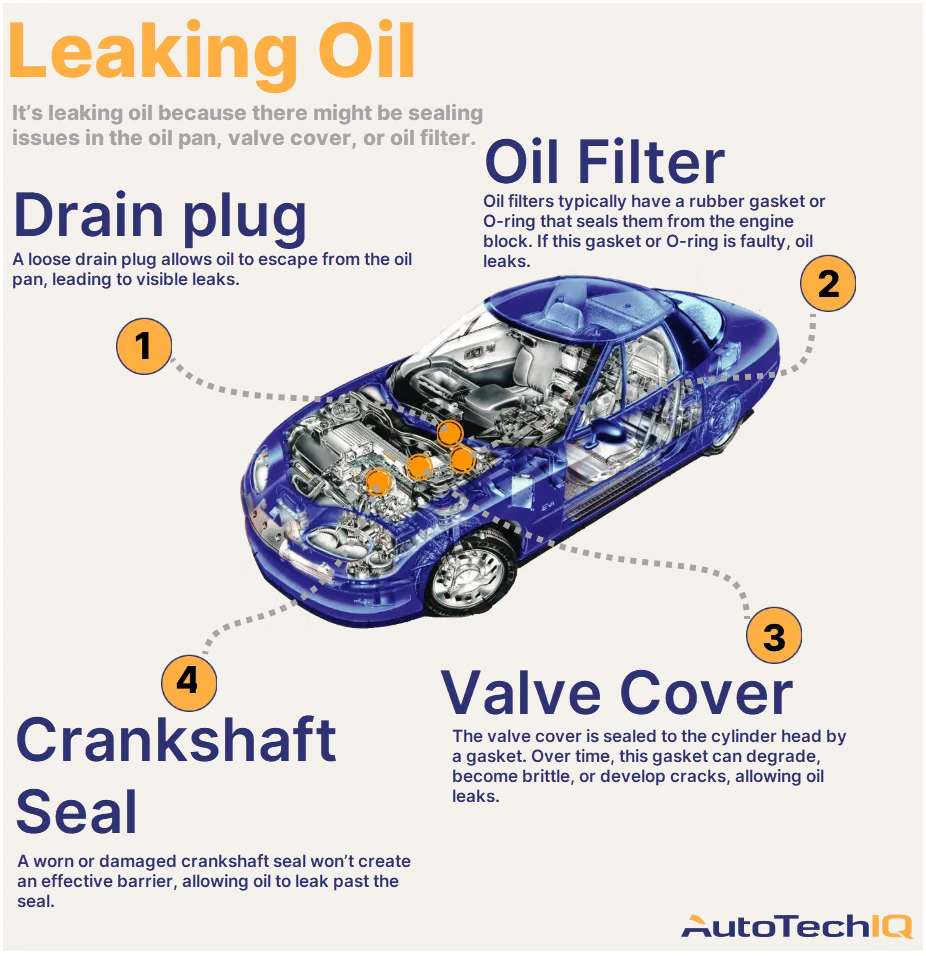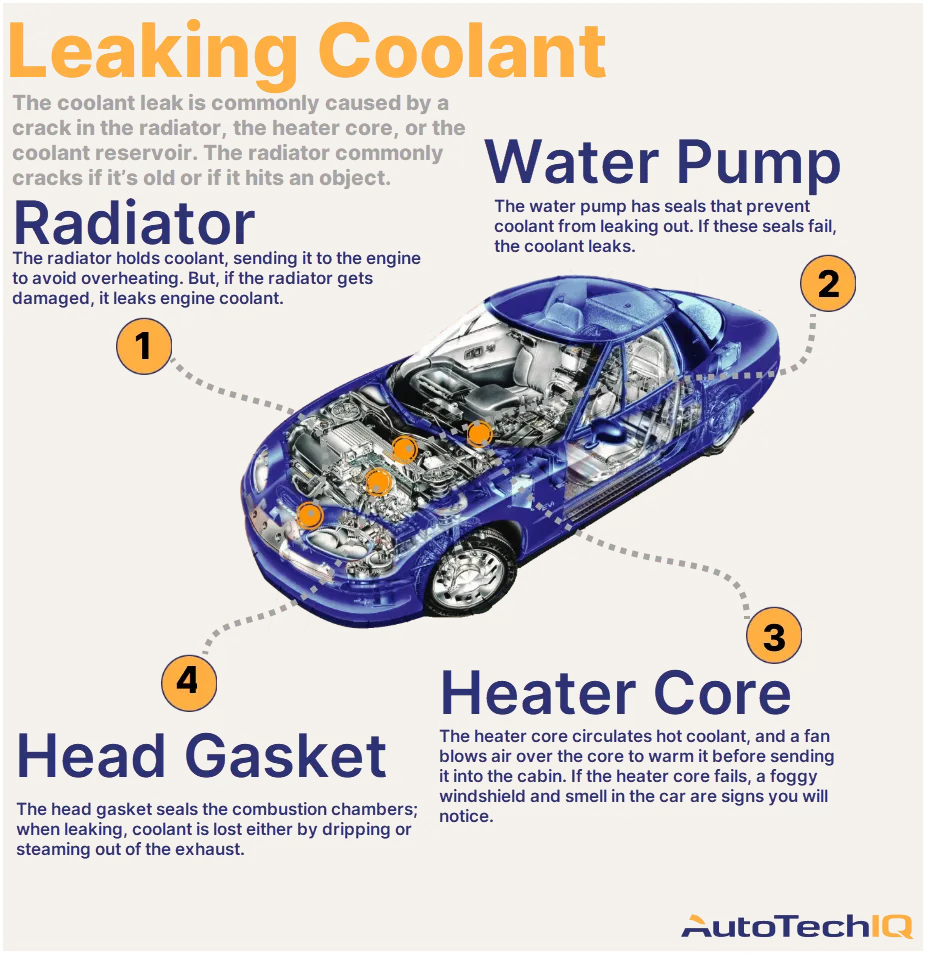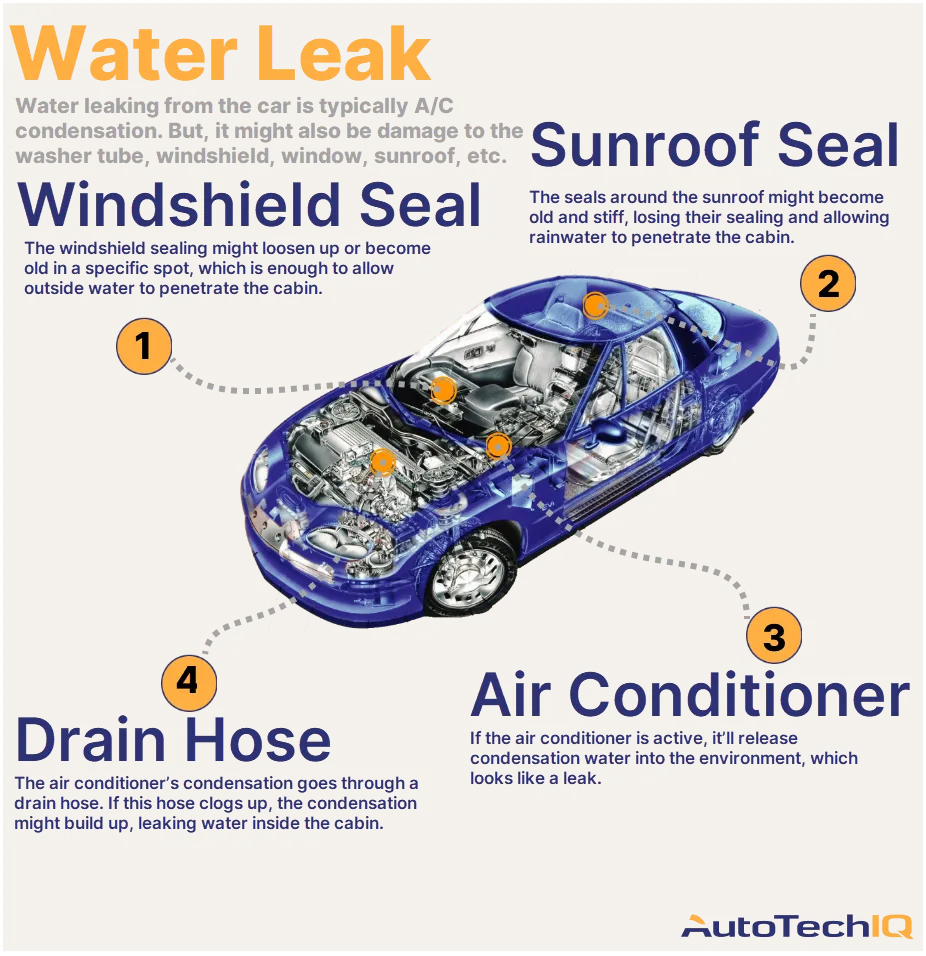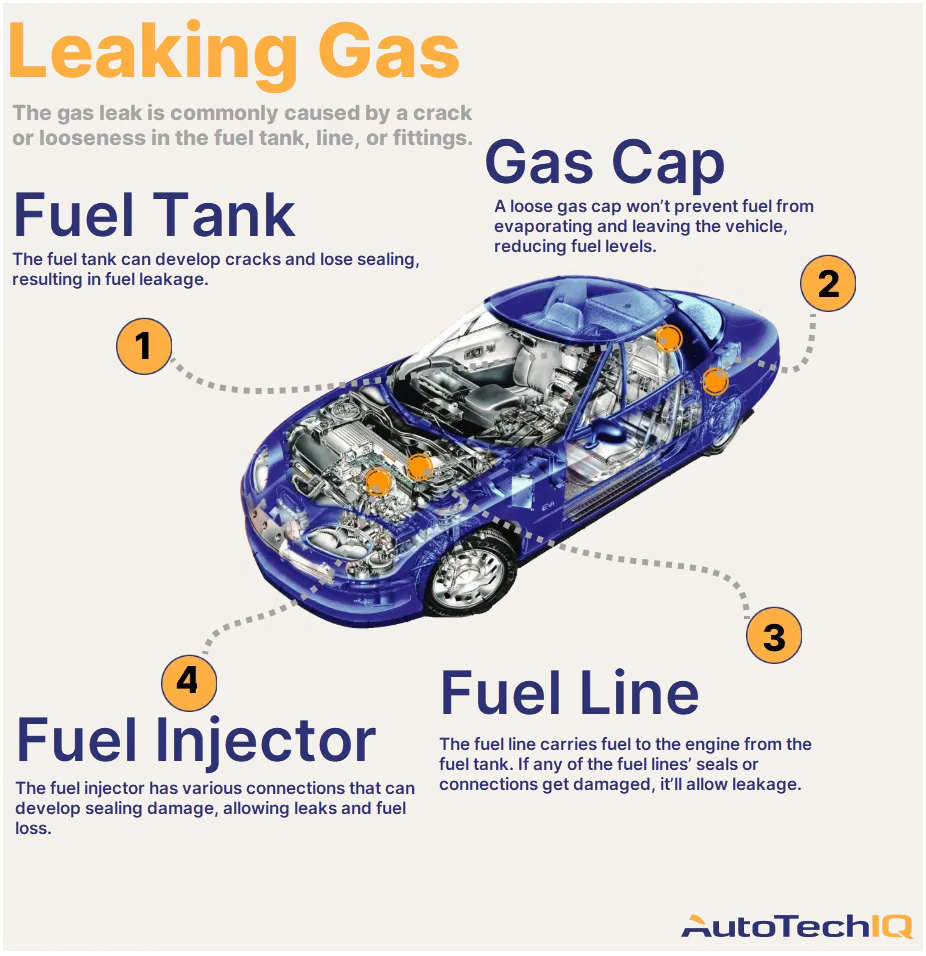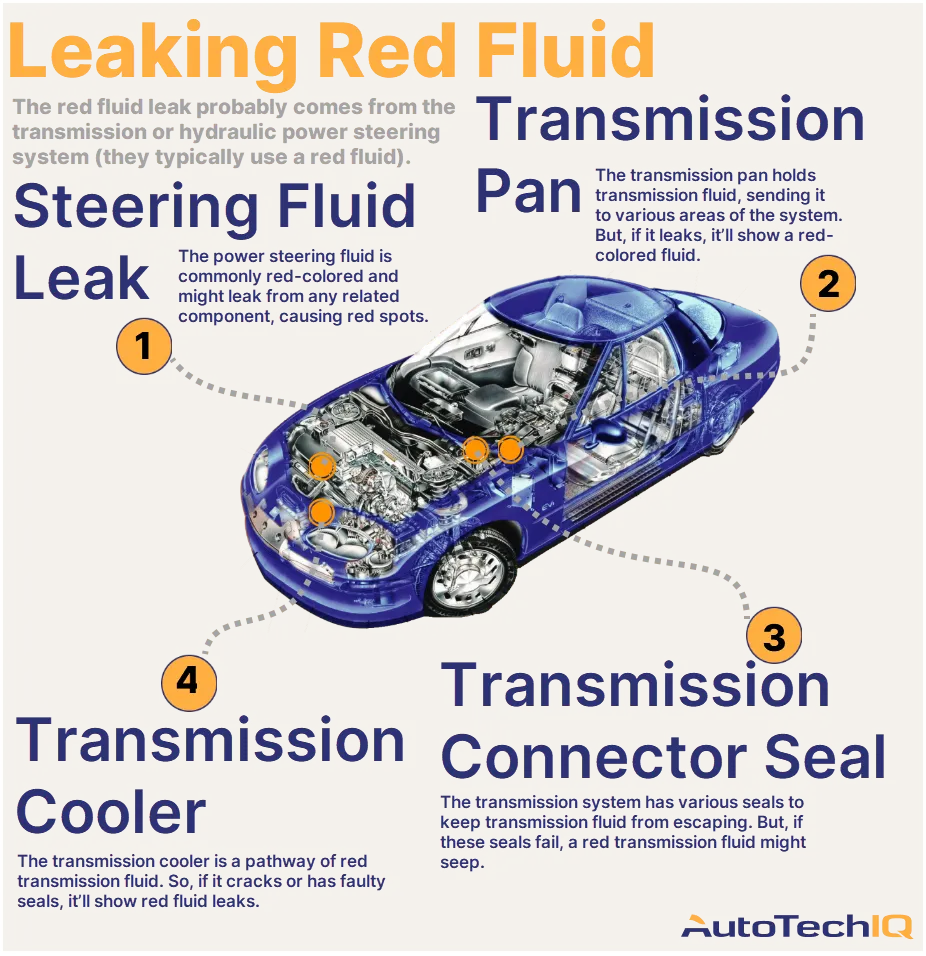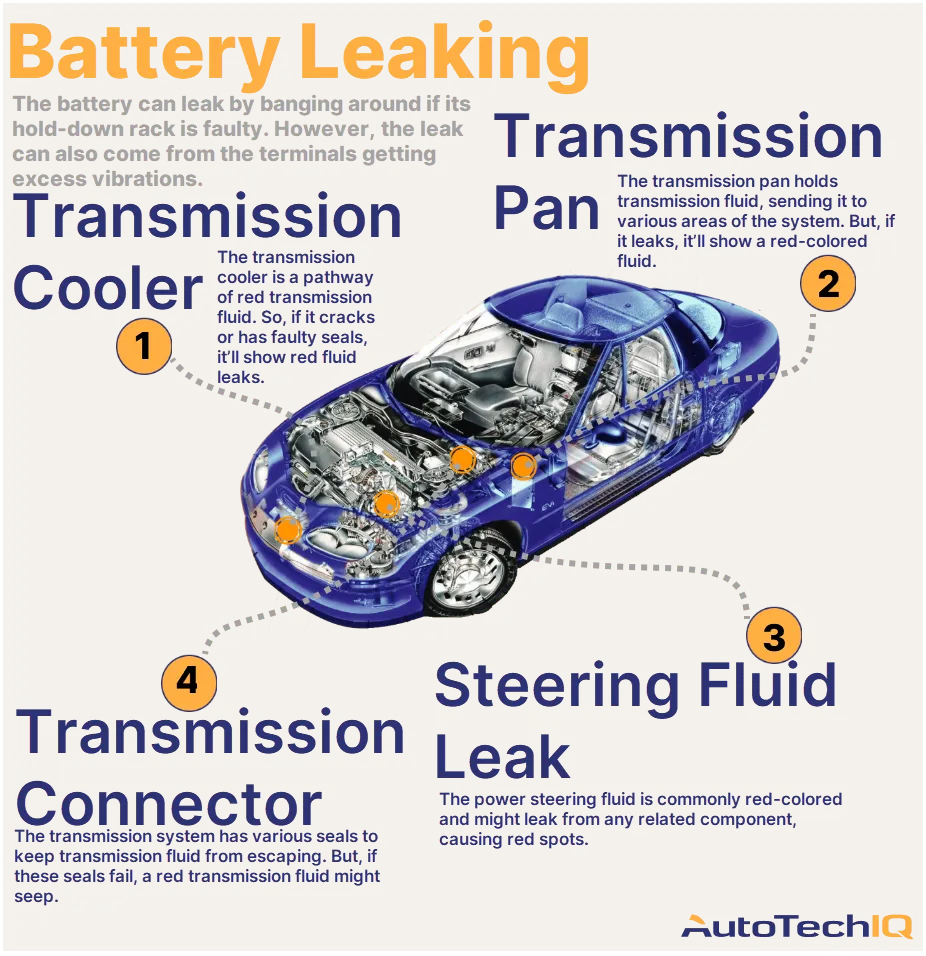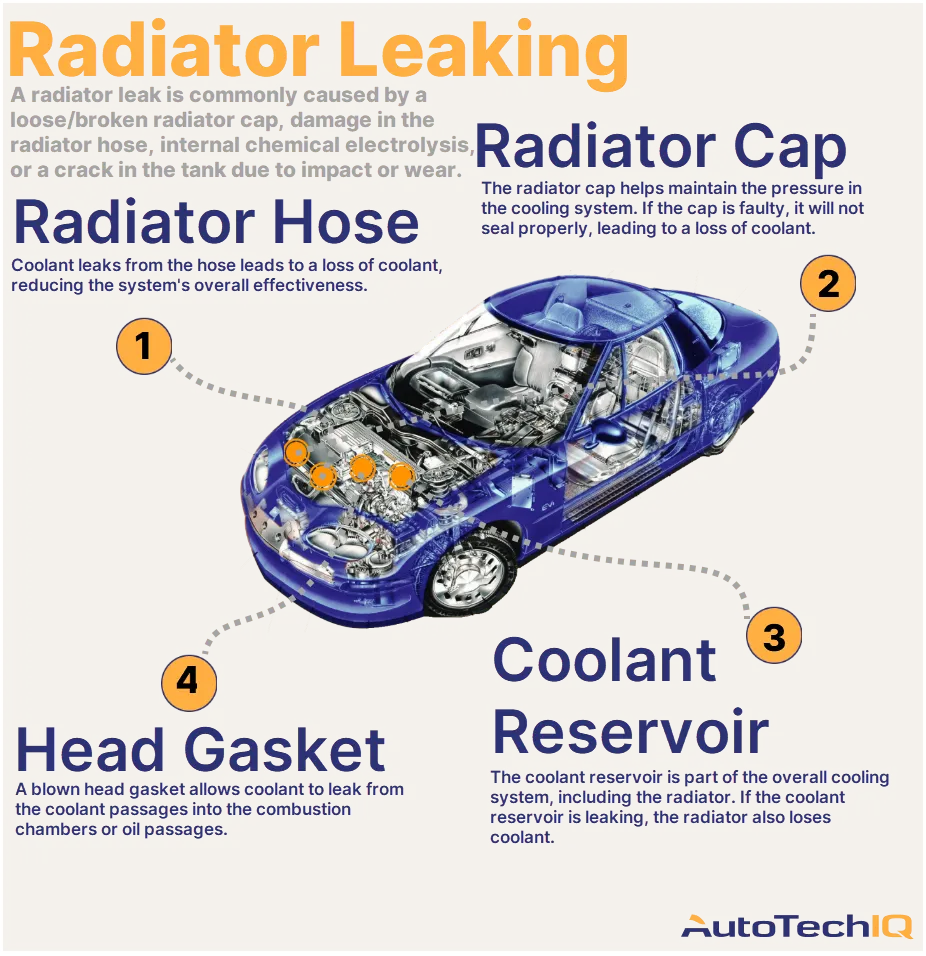Transparency example in a transmission fluid leak service
A transmission system inspection is the most transparent process to understand why your vehicle’s transmission fluid is low. This is because many components surrounding the transmission clutch and valve body can have a say in the issue, indicating the real culprits that caused it all.
Let’s read an example of how this kind of inspection helps to service a transmission fluid leak.
When the customer brought their vehicle in, they expressed concern about the transmission not shifting correctly and the check engine light being active on the dashboard.
The technician confirmed that the check engine light was on during a test drive. However, they also noticed that the transmission seemed slipping, so it was not changing gears smoothly.
As part of a thorough inspection, the technician checked the transmission fluid and found it low. Additionally, they observed transmission fluid leaking and covering the bottom of the radiator.
The technician requested authorization for additional diagnostic procedures to diagnose the issue further. They used a specialized scanner for the specific vehicle to check for any trouble codes and monitor the transmission temperature.
At that moment, the temperature was within the normal range. The technician then topped off the transmission fluid and cleaned the oil residue from the radiator and transmission lines.
After starting the vehicle, they confirmed that the leak originated from the transmission cooler, a part of the radiator. As a result, the radiator and the transmission cooler will need to be replaced as an assembly.

In this case, the mechanic put the “Immediate Action” tag on the transmission cooler.
